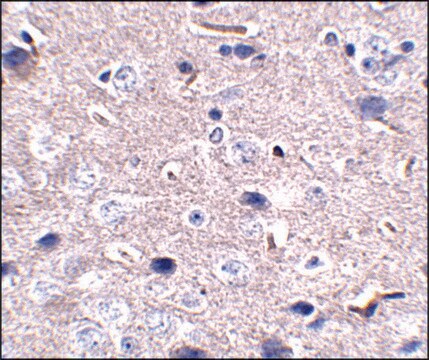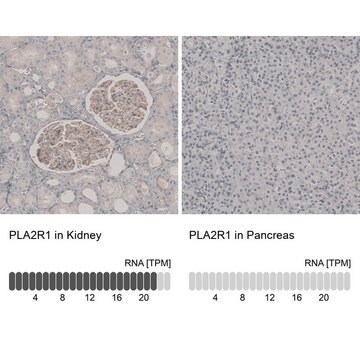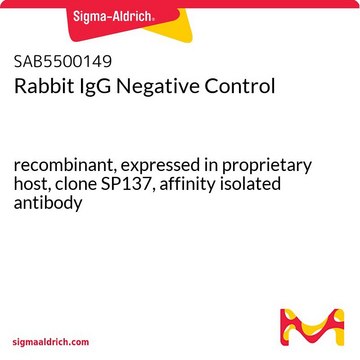MABF925
Anti-FcγRII (human) Antibody, clone AT10
clone AT10, from mouse
Synonim(y):
CD32CDw32, Fc-gamma RII-a, Fc-gamma RII-b, Fc-gamma RII-c, Fc-gamma-RIIa, Fc-gamma-RIIb, Fc-gamma-RIIc, FcRII-a, FcRII-b, FcRII-c, IgG Fc receptor II-a, IgG Fc receptor II-b, IgG Fc receptor II-c, Low affinity immunoglobulin gamma Fc region receptor II-a
About This Item
Polecane produkty
pochodzenie biologiczne
mouse
Poziom jakości
forma przeciwciała
purified immunoglobulin
rodzaj przeciwciała
primary antibodies
klon
AT10, monoclonal
reaktywność gatunkowa
human
metody
flow cytometry: suitable
izotyp
IgG1κ
numer dostępu NCBI
Warunki transportu
dry ice
docelowa modyfikacja potranslacyjna
unmodified
informacje o genach
human ... FCGR2A(2212) , FCGR2B(2213)
Opis ogólny
Specyficzność
Immunogen
Zastosowanie
Flow Cytometry Analysis: A representative lot was conjugated with Phycoerythrin (PE) and immunostained the surface of human Burkitt′s lymphoma Ramos cells transfected with FcγRIIB, but not untransfected Ramos cells (Courtesy of Professor Martin J. Glennie, University of Southampton, UK).
Flow Cytometry Analysis: Clone AT10 hybridoma culture supernatant was employed to detect FcγRII-positive peripheral blood lymphocytes (PBLs) by flow cytometry (Greenman, J., et al. (1991). Mol. Immunol. 28(11):1243-1254).
Immunoprecipitation Analysis: A representative lot immunoprecipitated FcγRII from human K562 erythroleukemic cells (Greenman, J., et al. (1991). Mol. Immunol. 28(11):1243-1254).
Affinity Binding Assay: Affinity binding study using the Fab′ fragment of clone AT10 showed an equilibrium binding constant (Ka) of 5.3 x 10^8/M and a total of 1.5 x 10^5 binding sites per K562 cell (Greenman, J., et al. (1991). Mol. Immunol. 28(11):1243-1254).
Neutralization Analysis: The F(ab′)2 fragment of clone AT10 blocked FcγRII-dependent B-cell activation by a chimeric anti-CD40 mAb with human IgG1 Fc (ChiLob 7/4 h1) induced in the presence of FcγRII-overexpressing 293F as the crosslinking cells (White, A.L., et al. (2015). Cancer Cell 27(1):138–148).
Neutralization Analysis: Both the Fab′ and F(ab′)2 fragments of clone AT10, but not control IgG1 or control F(ab′)2, blocked K562 cells from rosetting with rabbit IgG-coated chick red blood cells (CRBCs) (Greenman, J., et al. (1991). Mol. Immunol. 28(11):1243-1254).
Neutralization Analysis: The F(ab′)2 fragment of clone AT10 blocked the lysis of chick red blood cells (CRBCs) by effector cells via redirected cellular cytotoxicity (RCC; antibody-dependent cell-mediated cytolysis; ADCC) mediated by an anti-CRBC monoclonal antibody (E11C12) (Greenman, J., et al. (1991). Mol. Immunol. 28(11):1243-1254).
Inflammation & Immunology
Immunoglobulins & Immunology
Jakość
Flow Cytometry Analysis: 1.0 µg of this antibody detected FcγRII in 1x10E6 human peripheral blood mononuclear cells (PBMCs).
Opis wartości docelowych
Postać fizyczna
Przechowywanie i stabilność
Handling Recommendations: Upon receipt and prior to removing the cap, centrifuge the vial and gently mix the solution. Aliquot into microcentrifuge tubes and store at -20°C. Avoid repeated freeze/thaw cycles, which may damage IgG and affect product performance.
Inne uwagi
Oświadczenie o zrzeczeniu się odpowiedzialności
Nie możesz znaleźć właściwego produktu?
Wypróbuj nasz Narzędzie selektora produktów.
Kod klasy składowania
12 - Non Combustible Liquids
Klasa zagrożenia wodnego (WGK)
WGK 2
Temperatura zapłonu (°F)
Not applicable
Temperatura zapłonu (°C)
Not applicable
Certyfikaty analizy (CoA)
Poszukaj Certyfikaty analizy (CoA), wpisując numer partii/serii produktów. Numery serii i partii można znaleźć na etykiecie produktu po słowach „seria” lub „partia”.
Masz już ten produkt?
Dokumenty związane z niedawno zakupionymi produktami zostały zamieszczone w Bibliotece dokumentów.
Nasz zespół naukowców ma doświadczenie we wszystkich obszarach badań, w tym w naukach przyrodniczych, materiałoznawstwie, syntezie chemicznej, chromatografii, analityce i wielu innych dziedzinach.
Skontaktuj się z zespołem ds. pomocy technicznej







